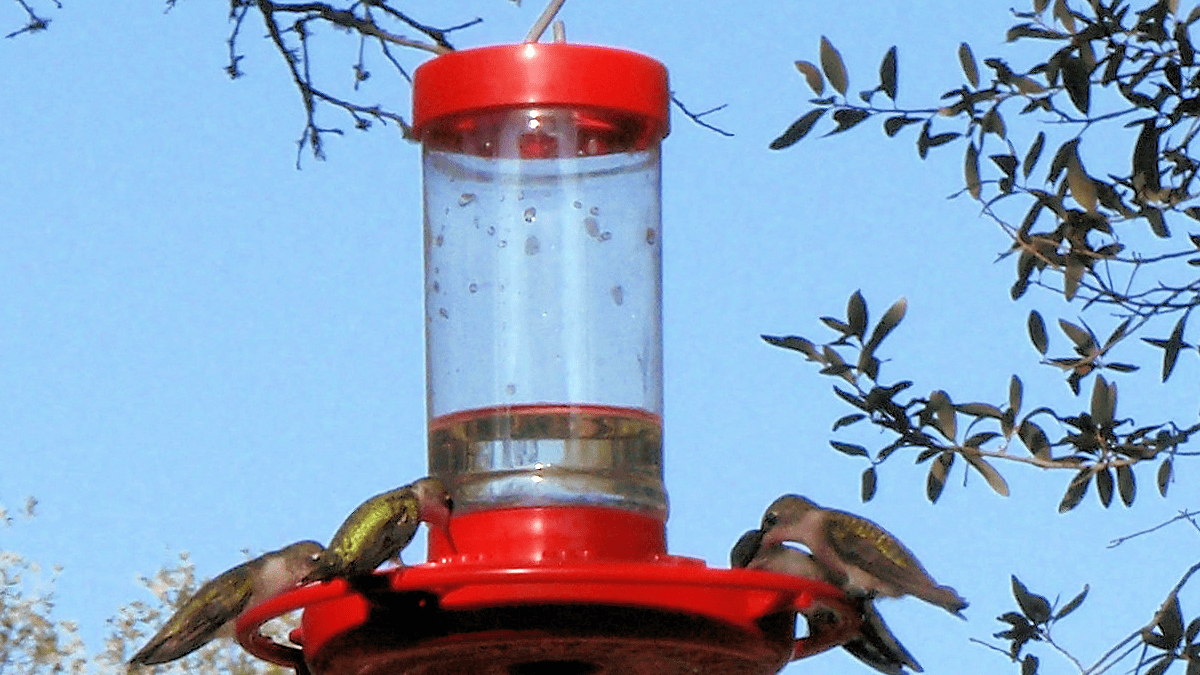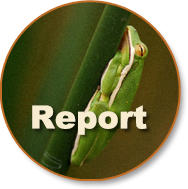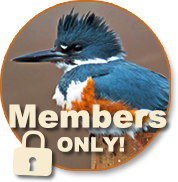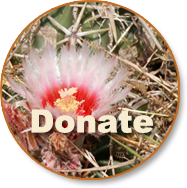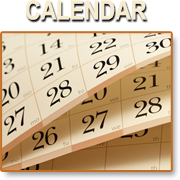By Barbara Jones, Mid-Coast Texas Master Naturalist
It was a September morning, and I was enjoying the second wave of hummers migrating south this month. Such a joy to watch! They were emptying the feeders very quickly. Some days I was feeding up to a gallon of sugar water. I had plans for the day, so I put the coffee pot on to brew, went to get the ladder, and was taking the first feeder down when I spied a hummingbird on the ground, struggling and making distress calls.
I picked it up and was checking it when I heard another one making the same calls. It, too, was on the ground under the feeder. Well, this was enough to make me panic! What had happened to these little jewels? I jumped to the conclusion that they had gotten into some sap, glue, or oil. The first hummer had a black sticky substance on his bill, and it appeared that the wing was stuck to the back. I pulled the goo off the bill and tried to get it off the wing, but was afraid that I would pull the feather out. The second hummer was already getting weak and I was very concerned that it would not survive.
This was a job for Dianne! She is a friend, fellow Mid-Coast Texas Master Naturalist, and volunteers at the ARK. I called her and she said that if I would get some Dawn dish soap—the only thing approved for cleaning birds—and bring it that she would see what she could do. She suggested that I try to give them some sugar water to keep their strength up until we could check them.
I tried to drop sugar water on the end of their bills and was not able to get them to drink any at all. I do not remain calm in these situations.
OK, throw on some clothes, put the babies in a covered container, and take off for Wal-Mart to get the Dawn. I checked the birds several times. It appeared that they were even sticking to the paper towel that I had put in the bottom of the container.
When I got to Dianne’s house, she began to feed the sugar water. I was amazed that she put the bill about 1/3 of the way into the syringe and patiently waited for the bird to start drinking. That little tongue began to lap so quickly that it was almost too fast to see. You could just see the fluid in the syringe going down. She waited just a little bit and fed him again. After several feedings, she began to clean the bird, using just a drop of Dawn on the feathers. I was still holding the other hummer who was weakening even more.
“Look,” she said, as she began to pull something off the wing. It was spider web! It was wrapped all around the wings and feet. As she was pulling the web off, I could see that it looked almost like sewing thread. She said it was very strong, about half the strength of thread. After getting the web off the baby, she fed it again, put it in my hand and said “Lets see if it is ready. We went outside. I opened my hand and the little hummer flew to the tree. It is a thrill to see it fly after going through such trauma. Success!
Now back to the other little bird. It took a little longer to get this one respond, but when it did drink, the eyes got brighter and immediately began to look alert. After several feedings, Dianne cleaned the web off and we released it. This one actually flew better than the first one. Another success.
Oh, and the spider web? I found it between the two posts that hold some of the feeders. The web was built in the inverted “v” where the two posts meet at the top. I tore it down and now check every time I change the feeders to see if there are any more “hanging around.”
Remember, when you are checking your hummingbird feeders, please look around for spider webs in the area. They seem to pop up overnight. I love spiders, but I don’t want to find any more hummers wrapped in spider webs!

